1784 Along the White Pass & Yukon
Century of White Pass & Yukon Route Equipment
by Carl E. Mulvihill, edited by Keith Nore
Whitehorse: Yukon Transportation Museum, 2022
$59.00 / 9781777544317
Reviewed by Robert D. Turner
*
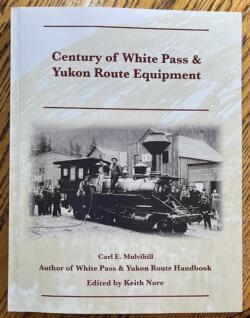 The White Pass & Yukon Route’s fascinating international railway has a history going back to the Klondike Gold Rush in the Yukon. It was built inland from Skagway, on the Alaskan coast, bypassing the torturous climbs over either Chilkoot Pass or White Pass that were endured by thousands of gold seekers trying to reach the central Yukon and the Klondike region around Dawson City. The railway reached Whitehorse, in the Yukon, in 1900, and from there the company operated a fleet of large sternwheelers on the Yukon River. They carried freight, mail and passengers all the way to Dawson, and downstream to Fairbanks and other points in Alaska. Over the last century and a quarter, the White Pass & Yukon’s railway has had a profound impact on the Yukon and coastal Alaska. Today it remains a key and vital component of the international region’s heritage tourism industry, carrying thousands of passengers from Skagway, over spectacular White Pass to Fraser, BC, and Carcross, Yukon. At present, trains do not run as far as Whitehorse.
The White Pass & Yukon Route’s fascinating international railway has a history going back to the Klondike Gold Rush in the Yukon. It was built inland from Skagway, on the Alaskan coast, bypassing the torturous climbs over either Chilkoot Pass or White Pass that were endured by thousands of gold seekers trying to reach the central Yukon and the Klondike region around Dawson City. The railway reached Whitehorse, in the Yukon, in 1900, and from there the company operated a fleet of large sternwheelers on the Yukon River. They carried freight, mail and passengers all the way to Dawson, and downstream to Fairbanks and other points in Alaska. Over the last century and a quarter, the White Pass & Yukon’s railway has had a profound impact on the Yukon and coastal Alaska. Today it remains a key and vital component of the international region’s heritage tourism industry, carrying thousands of passengers from Skagway, over spectacular White Pass to Fraser, BC, and Carcross, Yukon. At present, trains do not run as far as Whitehorse.

This book is not a history of the railway as such, but it is a detailed account of the railway’s locomotives and rolling stock. It is essentially a material history of the railway, and it is a fascinating one. The railway was built to 3-foot (914-mm) gauge, a narrow gauge that in most places in North America had become obsolete in favour of standard gauge, 4 feet, 8.5 inches (1435 mm). Being narrow gauge, the equipment was (and is) somewhat smaller than on most North American railways, and the costs of construction were significantly lower. As well, the railway could operate around tight curves and on steep grades in the mountains. The White Pass was able to buy much of its equipment on the used market, so even in the early days, there was a mixture of types and builders, making the history of the railroad’s equipment complex and often difficult to research.
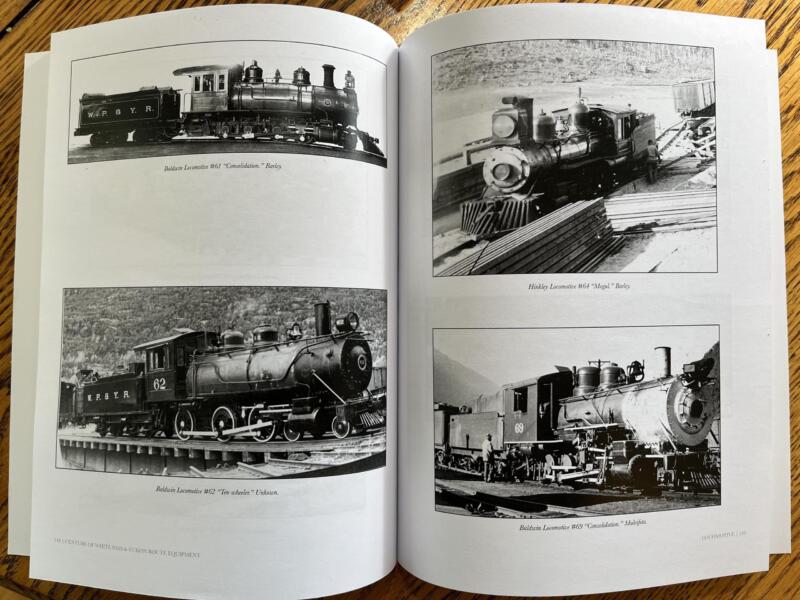

During the Second World War, the railway was taken over by the United States Army, because of the threat of Japanese attacks on Alaska. The railway became an important link in supplying military bases in Alaska and in the construction of the Alaska Highway. Narrow gauge equipment was commandeered from narrow gauge lines in the Lower 48 States. These included the Colorado & Southern, the Denver & Rio Grande Western and the Silverton Northern in Colorado. As well, engines and cars came from the Sumpter Valley Railroad in Oregon, the Nevada County Narrow Gauge in California, and the East Tennessee and Western North Carolina Railroad in its namesake states. In addition, new locomotives were delivered to the railroad to help it cope with the surging traffic demands.
Interestingly, some of the equipment brought to the White Pass by the US Army subsequently found its way back to its original homes in the Lower 48 States for museum and tourist railroads purposes. This reprieve for many pieces of equipment, made by being used on the White Pass instead of going for wartime scrap, made the preservation of important artifacts, including locomotives and rolling stock, possible.


After the war, the military returned the railroad to private operation, and some of the used equipment was eventually scrapped, although the railroad acquired a lot of useful rolling stock and some locomotives for continued use. New engines also were ordered, more suited to the particular needs of the White Pass. In the mid-1950s, the White Pass began to purchase diesel locomotives from General Electric and the steam engines was gradually retired. More changes came with the introduction of containerization to the White Pass system including its shipping connections to the south. The Yukon River steamers were retired, replaced by buses and a trucking system. Key to the modernization of the White Pass was the use of containers. They were carried on specially designed ships to Skagway and from there were carried over the railroad to Whitehorse. This major change prompted the acquisition of new railway cars (and the modification of existing ones) to carry the containers. As well, additional locomotives were needed. The White Pass is considered a pioneer in the use of containers for intermodal shipping for general freight and ore concentrates.


The development of the Anvil mine in Yukon produced increased ore traffic for the White Pass and long trains of flatcars carrying ore containers became a hallmark of the railway. At the same time, the tourist trade increased and passenger services over the beautiful White Pass route increased year by year. However, in 1982 service on the railroad was suspended when ore traffic ended, and it did not reopen until 1988, but with a difference. In its new incarnation, it has only carried passengers and has not operated beyond Carcross, in Yukon. Only very rare trains have run as far as Whitehorse. In the role of a heritage or tourist line, connecting with the many cruise ships that visit Skagway, the White Pass continues to prosper and is perennially popular.
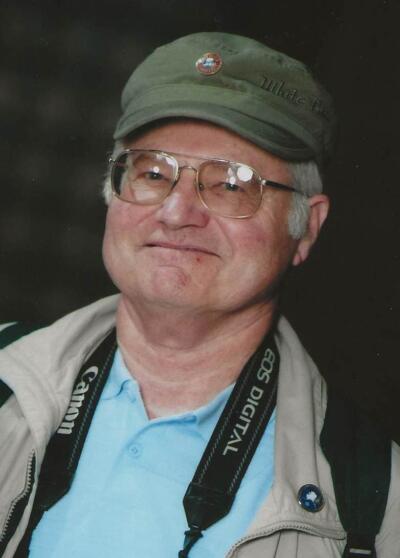
Carl Mulvihill knew the White Pass & Yukon’s railroad intimately, working for the company for many years as a dispatcher and in other positions. His father and grandfather were both White Pass veterans. Moreover, for Carl growing up in Skagway, the White Pass was ever present and very much central to the community. It continues to be an iconic feature of Skagway. Carl, who passed away in 2021, spent countless hours researching and documenting White Pass equipment and history, photographing the line and finding photos from many archival and private sources. This volume was edited and compiled by Keith Nore, a good friend of Carl, who worked with Carl over several years, to bring together all the information and photos into book form. This was not a simple task because of the great amount of data that needed to be tabulated, endlessly proofed and fact-checked, before publication. Moreover, there were dozens of photos to select and integrate with the text. Thank you, Keith for taking on this project.
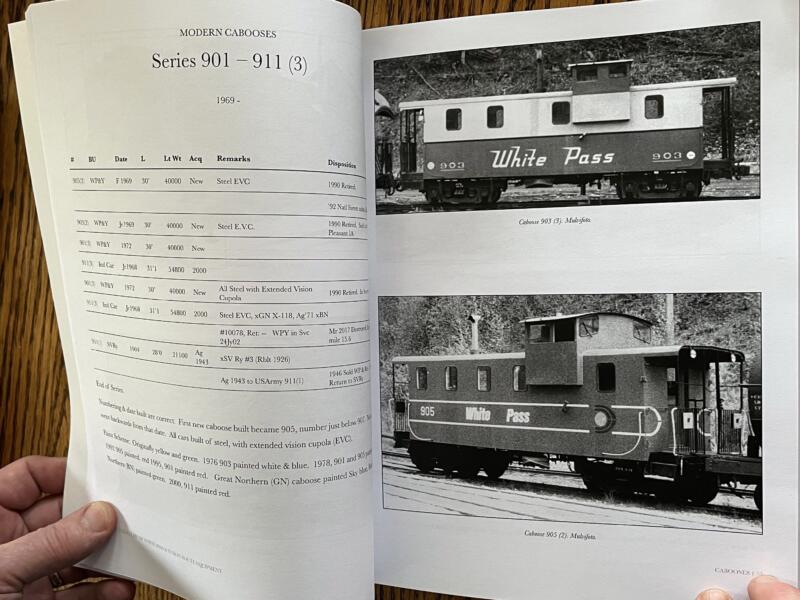

Their book provides summaries of the different types of equipment, explaining their uses and why they were needed on the White Pass for its operations and customers. Following the chapter introductions there are detailed tables documenting every piece of equipment used on the railroad. The listings include all the locomotives, freight cars, passenger cars, maintenance of way cars, cabooses and related equipment, noting construction dates and makers as well as modifications and changes made over the years. Photos are included of the different types of equipment along with very brief captions, which normally simply identify the equipment and photographer.

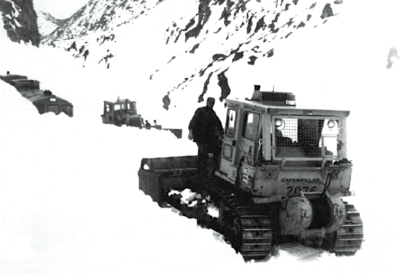
A book such as this one is valuable from many perspectives. It gives a detailed insight into what was required to operate the railway in the very harsh winter conditions of the mountains and during the Second World War. Model builders will find it an essential reference on the varied equipment on the line, and it will also be invaluable for dating or identifying historical photos of the railway and region since the time of the Klondike Gold Rush. As well, this is the record of a dedicated researcher (and a dedicated editor) who brought together an historical publication that I doubt anyone else could have produced. I had the pleasure of meeting Carl in Skagway long ago and we kept in touch for many years, and I can’t think of anyone more qualified to have done this research on the White Pass than Carl.
Century of White Pass & Yukon Route Equipment is published, most appropriately, by the very fine Yukon Transportation Museum in Whitehorse and it can be ordered directly from the Museum. You can save on postage by shipping two or more books together.

*

Robert D. Turner is Curator Emeritus, Royal BC Museum, where he was Chief of Historical Collections for many years. He is the author of 18 books on transportation history and 400 articles and book reviews. Over 4,000 of his photographs have been published in books, magazines, and exhibits. He is a Fellow of the Royal Canadian Geographical Society (FRCGS), and in June 2022 was awarded an honorary doctorate by Simon Fraser University. As a heritage consultant, he has extensive experience with heritage sites, historic railway operations, restoration projects, and museum developments from many countries. Visit his website here. Editor’s note: Robert Turner has also reviewed books by John Wiznuk and John Cowan for The British Columbia Review, and his book The Klondike Gold Rush Steamers: A History of Yukon River Steam Navigation (Harbour Publishing, 2019) was reviewed by Ken Coates.
*
The British Columbia Review
Publisher and editor: Richard Mackie
Formerly The Ormsby Review, The British Columbia Review is an on-line book review and journal service for BC writers and readers. The Advisory Board consists of Jean Barman, Wade Davis, Robin Fisher, Barry Gough, Hugh Johnston, Kathy Mezei, Patricia Roy, Maria Tippett, and Graeme Wynn. Provincial Government Patron (since September 2018): Creative BC. Honorary Patron: Yosef Wosk. Scholarly Patron: SFU Graduate Liberal Studies.
“Only connect.” – E.M. Forster
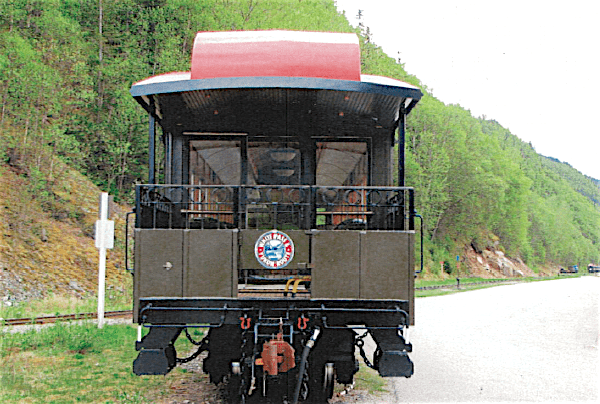
3 comments on “1784 Along the White Pass & Yukon”